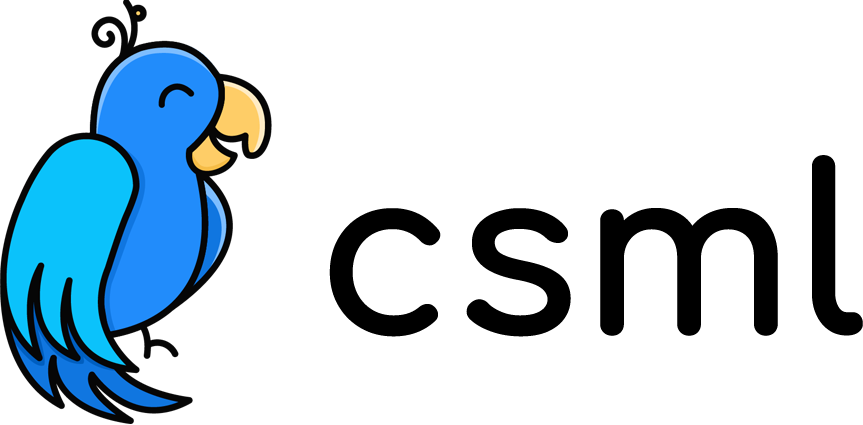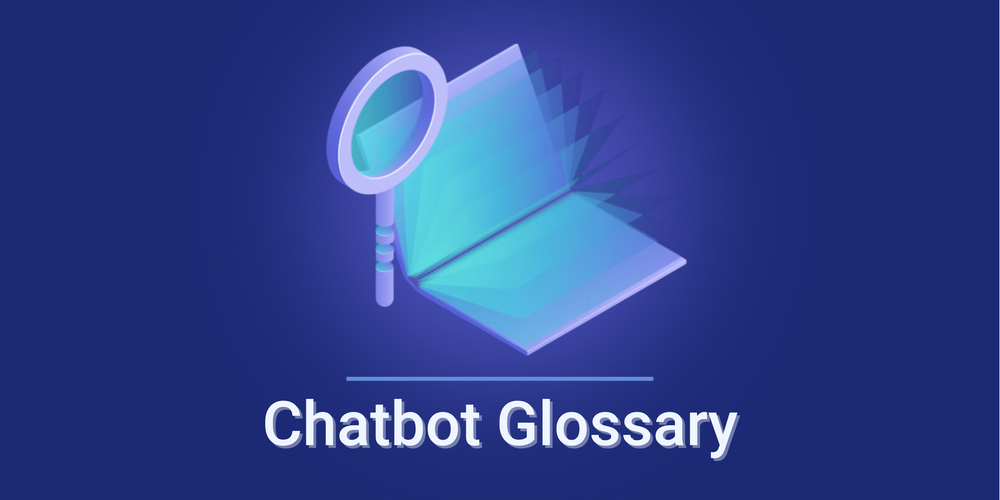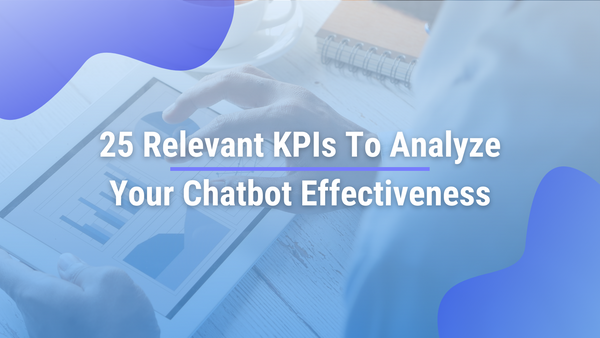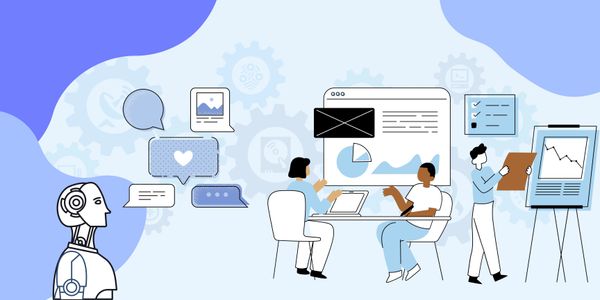Chatbot glossary with essential terms and concepts you need to know
Chatbots belong to a particular domain that mixes computer science, artificial intelligence, and linguistics. Knowing the different concepts encompassing the chatbot field to understand its ins and outs is essential. You will find here a chatbot glossary with essential terms you need to know about chatbot building.
Chatbot glossary with essential terms you need to know - Table of contents
Artificial Intelligence vocabulary
Chatbot vocabulary
- Autoresponder
- Bot
- Chat Log
- Chatbot
- Chat Widget
- Entity
- Fallback
- Humans in the Loop
- Intent
- Session
- Training
- Typing Delay
- Utterance
Computer science vocabulary
- Algorithm
- Attribute
- Channel
- Embed
- Feature
- Framework
- Integration
- Knowledge Base
- Preprocessing
- Software
- Template
- UX
- Variable
- Webhook
Conversational AI vocabulary
Artificial Intelligence Vocabulary
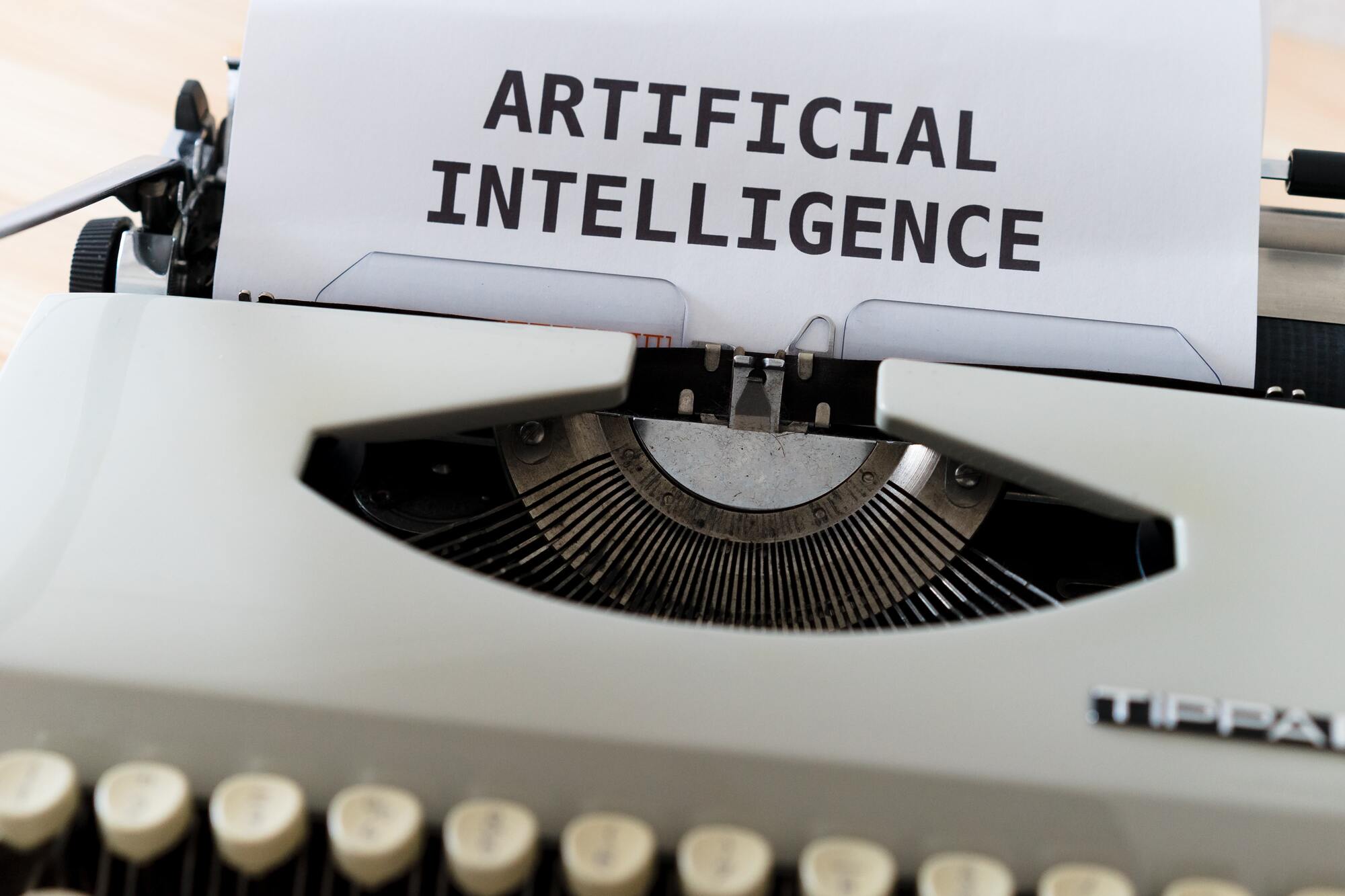
Discover in this category the basic terms and concepts of the artificial intelligence field. This vocabulary is essential to understand how chatbots work.
AI - Artificial Intelligence
The term AI was born in 1950, thanks to Alan Turing. He raised the question of bringing a form of intelligence to machines. AI consists in giving a machine the ability to imitate human intellectual behaviors. This faculty is possible thanks to a set of concepts and technologies.
Decision tree
A decision tree is a graphical tool representing a set of different decisions in the form of a tree. Each decision is located at the end of the tree branches and is reached according to the decisions chosen by the users. The decision tree is an essential algorithm when building a chatbot. It allows the chatbot to respond adequately to user requests.
Deep Learning
Deep learning is a sub-branch of artificial intelligence. This notion designates all the automatic learning techniques that categorize Machine Learning. Machine Learning is based on a set of mathematical approaches that are used to model data.
Deep learning is widely used in several technologies, such as facial recognition or voice recognition. In the case of a chatbot, deep Learning is used so that the machine can adopt the appropriate reaction in a specific situation. Deep Learning works thanks to the neural network that analyzes the given situation.
Machine Learning
Machine Learning is a form of AI capable of making predictions from a database. Machine Learning allows AI to learn and improve its performance according to the data processed.
Sentiment Analysis
Allows identifying the type of emotion that emerges from a dematerialized textual source. It is the natural language processing that enables the chatbot to evaluate the kind of feeling that appears in the user's request.
Turing Test
The Turing test is a proposed test of artificial intelligence with the ability to imitate human conversation. Alan Turing created it in 1950 in his publication Computing machinery and intelligence. This test consists in putting in a verbal confrontation between a human with a computer and another blind human.
If the human who begins the conversation cannot tell who is the computer and who is the human, we can consider that the computer software has won the test. Both the computer and the human will try to have a human semantic appearance. To keep the test simple and universal, the conversation is limited to a textual exchange between the protagonists.
Chatbot Vocabulary
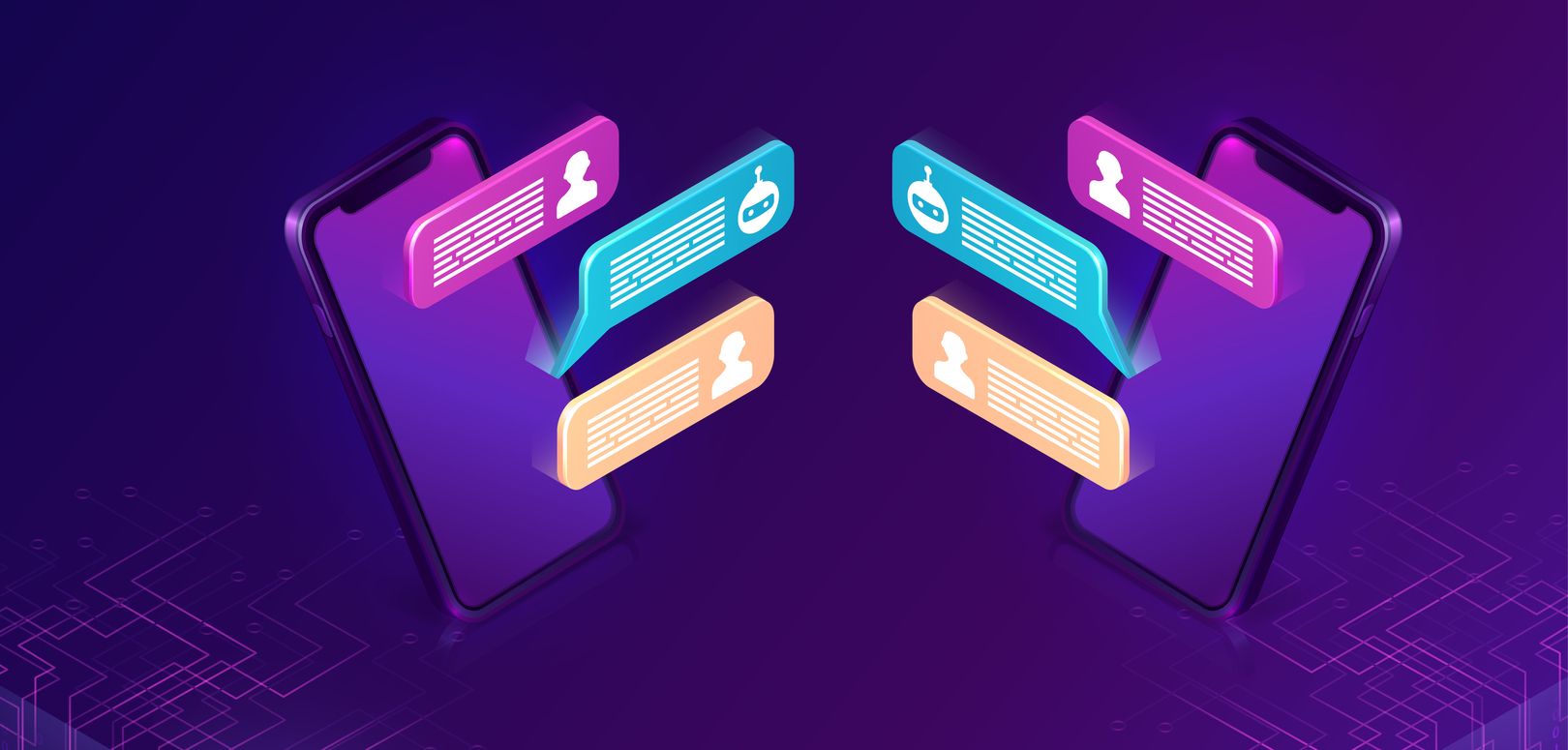
The field of chatbots requires knowledge of the different key concepts. Find the vocabulary you will inevitably be confronted with if you want to start building a chatbot.
Autoresponder
We often implement an autoresponder in a chatbot so that it can generate automatic responses to a message. Thanks to this functionality, chatbots save precious time for companies implementing them.
Example: Call bots are commonly used to automatically reply to customers 24/7, inform about opening hours, or redirect to the right service.
Bot
The word bot is another way to name a robot, chatbot, or voicebot. It defines a computer program that reproduces the actions of a human through artificial intelligence.
Chat Log
The chat log is a database of your chatbot where all the conversations recorded between the chatbot and the user are listed. It allows you to efficiently analyze the different actions of your chatbot to determine its effectiveness. You will be able to improve the functionalities of your chatbot.
Chatbot
A chatbot or conversational agent is a computer program composed of different algorithms. The chatbot uses artificial intelligence to dialogue and answers your users' questions. It is very useful to automate some time-consuming tasks. There are all sorts of use cases where chatbots can be very effective.
Chat Widget
A chat widget is a small window that appears automatically in the corner of your website. It allows you to chat directly with a chatbot or a person in case of need or specific questions about your research on the website. This is a great way to improve the user experience and quality of your site.
Conversational UI - user interface
Creating a conversational interface that is adapted and pleasant for the user. This interface must take into account the UX in order to offer a fluid and easy-to-use service. The conversational UI is, therefore a key issue in the chatbot building since it is the medium on which the chatbot will perform its actions.
Entity
An entity is an element of the conversation that a chatbot will analyze in order to answer the user's request. Don’t confuse intent and entity which are different elements. The entity is a precise characteristic contained in the request, the primary need of the user.
Example:
If the user asks: “Where can I find the best restaurant in New York?”, here "the best restaurant" is the intent, and "in New York" is the entity.
Fallback
The fallback occurs when the chatbot has not understood the question asked by the user. In this situation, it is possible to create an alternative answer that expresses to the user to reformulate his question. The chatbot will better understand it.
Humans in the loop
This is the moment when a user wants to chat with a human after his conversation with the chatbot. In this case, the chatbot redirects the user to a physical person who is better able to handle the user's request, via a livechat platform. f
Intent
An intent is the final motivation required by a user when addressing the chatbot. It is the purpose of the question asked by the user.
Example:
"What is the best beach to surf?"
The user's intention describes his primary interest is to find a beach. The chatbot will analyze his request thanks to the entity contained in the question which is "to surf".
Session
A chat session represents the time elapsed during a conversation between a user and a chatbot. It starts when a conversation with a chatbot begins and ends when the conversation is over.
Training
Training is an essential step in the development of your chatbot. It is used to evaluate your chatbot's efficiency and the relevance of its answers. Thanks to this step, you will be able to improve your chatbot's answers and interactions.
Typing delay
A typing delay is a chatbot’s component visible on the conversational interface by the user. It makes the conversation with the chatbot more realistic and natural for the user. The typing delay indicates to the user that the chatbot is processing his request.
Utterance
An utterance is the content of the request made by the user to the chatbot. It allows the chatbot to identify the keywords of the request in order to respond appropriately.
Computer Science Vocabulary

IT is now an integral part of our daily lives. Some of the terms in this list do not only apply to chatbots. They apply to IT in general. Understanding the basic vocabulary of this field is important to get into the chatbot business.
Algorithm
An algorithm is a sequence of steps allowing to obtain a result from its steps. Chatbots are composed of several algorithms such as NLP or decision trees.
API - application programming interface
It is a software interface that allows different software or services to be connected together. In this way, the two entities can exchange a certain number of functionalities and data.
It is possible to connect a chatbot to a very large number of APIs depending on the chatbot's characteristics and the chosen target.
Attribute
In computer science, an attribute is an identifier that describes information stored in a database. Each attribute is linked to a specific domain. A chatbot is composed of several attributes that aim to improve the user experience.
Channel
A channel is a broadcast and communication platform on which you can deploy your chatbot. It is important to know which channel your chatbot will be most useful to reach and target your audience.
Embed
We talk about embedding when a chatbot is an integral part of the structure of a website. You can deploy your chatbot on specific pages of your site. In this way, the conversational window of your chatbot will be activated according to the page of the website where the user is located.
Feature
Features are all the components available when building your chatbot. They are elements that make the chatbot more efficient and effective.
Example of features for an efficient chatbot:
- multilanguage
- sentiment analysis
- personalization
- easy integration with different APIs
- and many others
You can discover more about the CSML features by reading our documentation.
Framework
A framework is a set of software components aimed at creating a structure, a software’s architecture. It is the whole of software or an application.
Integration
An integration is an operation consisting in including software (specific development or software package) or any IT element in a company's information system. External applications are often integrated into chatbots.
Knowledge base
It defines the chatbot database. It’s the chatbot's memory, this knowledge allows it to answer a request in a precise way. The knowledge base can be improved regularly to make the chatbot more efficient.
Preprocessing
A program that performs transformations on a source code before the compilation stage (this is called a pre-compiler) or the actual interpretation stage.
Software Integration
Software integration is about connecting and linking several different software components.
Template
A template is a basic model that can be used in different areas. It makes website creation easier. The notable advantage of the template in computer science lies in the fact that it is not necessary to know how to code since it is composed of pre-existing lines of code.
UX - user experience
Refers to the experience of a user during an interaction. The UX is managed by a UX designer who makes the interactions of a site fluid and accessible so that the user's path is logical and pleasant.
Variable
A variable represents a specific value for each user. Variables allow your chatbot to identify and recognize a specific user in order to personalize the conversation between the two interlocutors.
Example of a variable:
- Age
- Name
- Address
- Language
- Country
- ...
Webhook
The webhook is a web anchor. It allows sending a notification when an event occurs. Thanks to the notifications, the system is automatically updated.
Example: A consumer buys a product on your site and you automatically generate an invoice.
Conversational Artificial Intelligence Vocabulary

Conversational artificial intelligences are present in many professional fields. We have gathered here the key vocabulary to understand their specificities.
Context
When using a chatbot, the context allows it to identify the type of answer it should provide to the user according to the question asked. It can then efficiently direct the user to the most appropriate answer.
Conversational UI - user interface
Creating a conversational interface that is adapted and pleasant for the user. This interface must take into account the UX in order to offer a fluid and easy-to-use service. The conversational UI is therefore a key issue in the chatbot building since it is the medium on which the chatbot will perform its actions.
Flow
The flow determines how a conversation between a chatbot and a user will unfold. Flows model conversations and the direction they will take. The flow must be natural and fluid to guarantee a good chatbot’s understanding by the user. It is a script that directs the conversation.
NLP - natural language processing
NLP brings together different fields such as linguistics, computer science, and AI. These three fields aim at processing natural language. It is an essential element in the chatbots sector and more generally in artificial intelligence. With the help of NLP, chatbots are more efficient and able to interpret human language.
NLU - natural language understanding
Natural language understanding (NLU) is related to natural language processing (NLP) technologies. Its goal is to understand the meaning of a text as a whole. It focuses on improving the ability of machines to understand the overall meaning behind words and in texts.
Small talks
Small talk is the first part of the contact between the chatbot and the user. It is a step that must be light and pleasant in order to establish a climate of trust between the chatbot and the user. It also aims to make the chatbot friendly.
Story
A story is a scenario between the chatbot and the user. It consists of several pre-designed interactions. This term is also regularly called user story.
Virtual agent
A virtual person who uses the AI to dialogue with a user, generally in one on one.
Conclusion
There are many other terms specific to the use and construction of a chatbot. The vocabulary presented in this article is a first approach to understanding the uses of a chatbot. These are the terms you will find most often in this field of activity.
